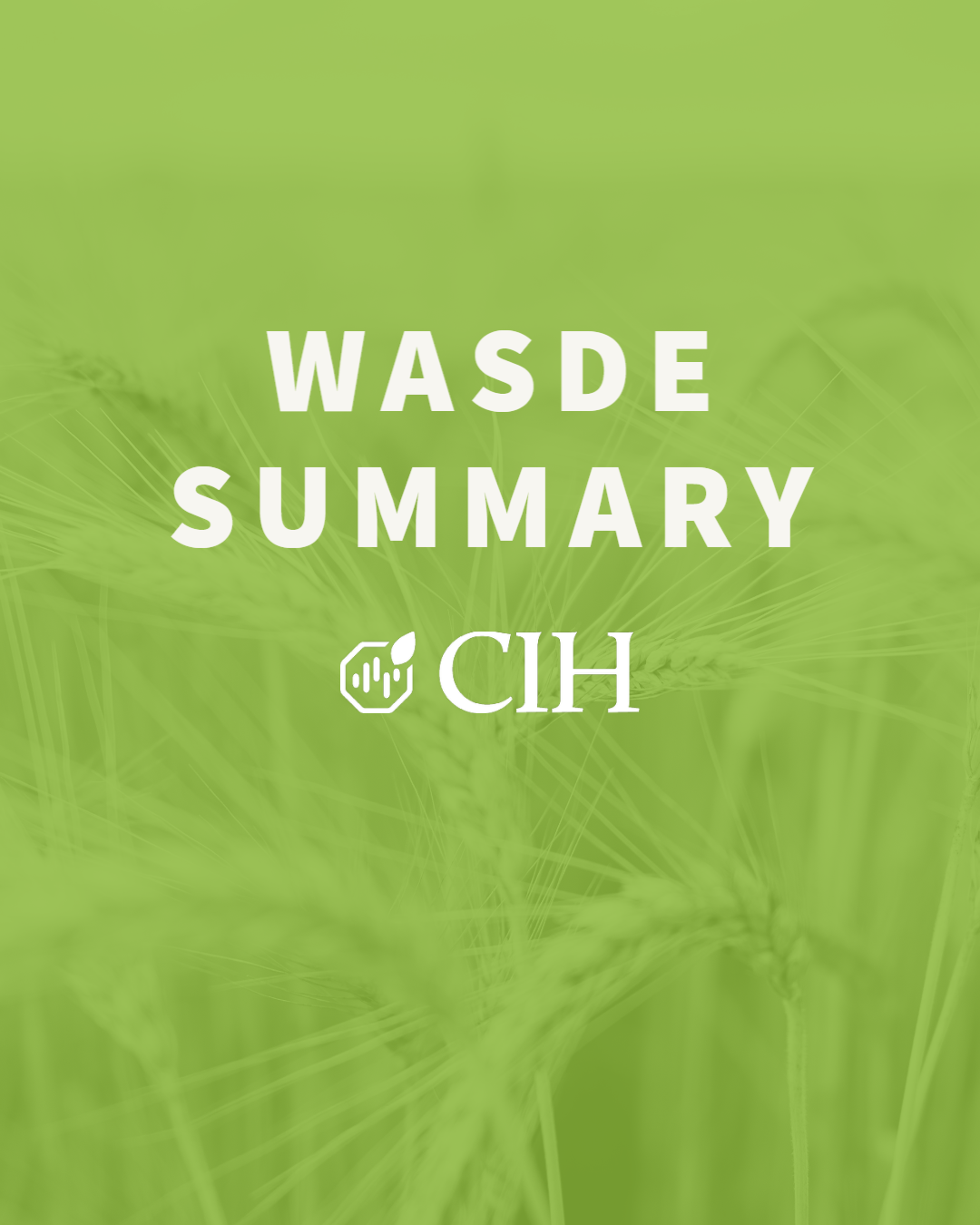
April 11, 2024
APRIL 2024 WASDE REPORT SUMMARY AND NOTES:
The April WASDE report was viewed as relatively neutral for corn, soybeans, and wheat as stock balance sheets were slightly higher than expectations. Market attention will continue to focus on weekly Crop Progress reports and the upcoming May WASDE report for indications of new crop potential.
Corn
For corn, the domestic 2023/24 balance sheet outlook called for greater corn used for ethanol and feed/residual use along with smaller ending stocks, with both corn used for ethanol and feed/residual use increasing by 25 million bushels each. The season-average corn price received by farmers was decreased to $4.70 per bushel. The global balance sheet called for lower production with declines for Argentina, South Africa, Mexico, and Moldova. These declines are partially offset by increases for the EU and Philippines. Corn production in Argentina was decreased by 1 million metric tons from last month to 55 million, while Brazilian corn production was unchanged from last month at 124 million metric tons. This was slightly larger than the average pre-report estimates of 122.1 million but within the range of expectations (118 to 124 million). Global ending stocks were reduced slightly to 318.3 million metric tons, slightly higher than analysts pre-report estimates (317 million), but within the range of estimates (314-319.1 million).
Global ending stocks pegged at highest level since 2018/19:

Soybeans
The domestic soybean 2023/24 balance sheet outlook called for lower imports, residual, exports, and higher ending stocks. Trade pace has slowed to date and lowered expectations for future shipments, causing ending stocks to raise from 315 million bushels in March to 340 million bushels in April. Brazilian soybean production was pegged at 155 million metric tons, unchanged from last month. This was slightly above analysts’ average pre-report estimate of 151.7 million and right at the top of the range of estimates (155 million) Argentinian soybean production was forecast at 50 million metric tons, nearly identical to the average pre-report estimate of 50.2 million. Global ending stocks fell slightly from last month’s estimate but came in a little higher than analysts’ estimates.
Domestic ending stocks at highest levels since 2019/20:

Global ending stock at highest level since 2018/19:

Wheat
The 2023/24 domestic wheat balance sheet outlook called for lower supplies, reduced domestic use, unchanged exports, and higher ending stocks. A reduction in projected imports led to tighter supplies, specifically in HRW. Domestic consumption is expected to be down based on the latest Grain Stocks report, lowering feed and residual use by 30 million bushels as a result. Ending stocks were increased by 25 million bushels to 698 million. This was larger than analysts’ average pre-report estimates of 685 million bushels but within the range of estimates. The global balance sheet called for larger supplies, consumption, exports, and reduced ending stocks. Supplies were increased for the EU, Moldova, and Pakistan, with the global consumption forecast increasing 1.1 million metric tons. Projected global trade was raised by 1.3 million tons largely due to higher export forecasts from Russia and Ukraine. Projected global ending stocks were lowered .6 million metric tons to 258.3, slightly lower than analysts’ pre-report estimate of 258.6. If realized, this would mark the lowest ending stocks since 2015/16.
Total wheat use at lowest level in at least thirty years:

Global ending stocks pegged lower for 4th straight year:

Questions?
Contact us here